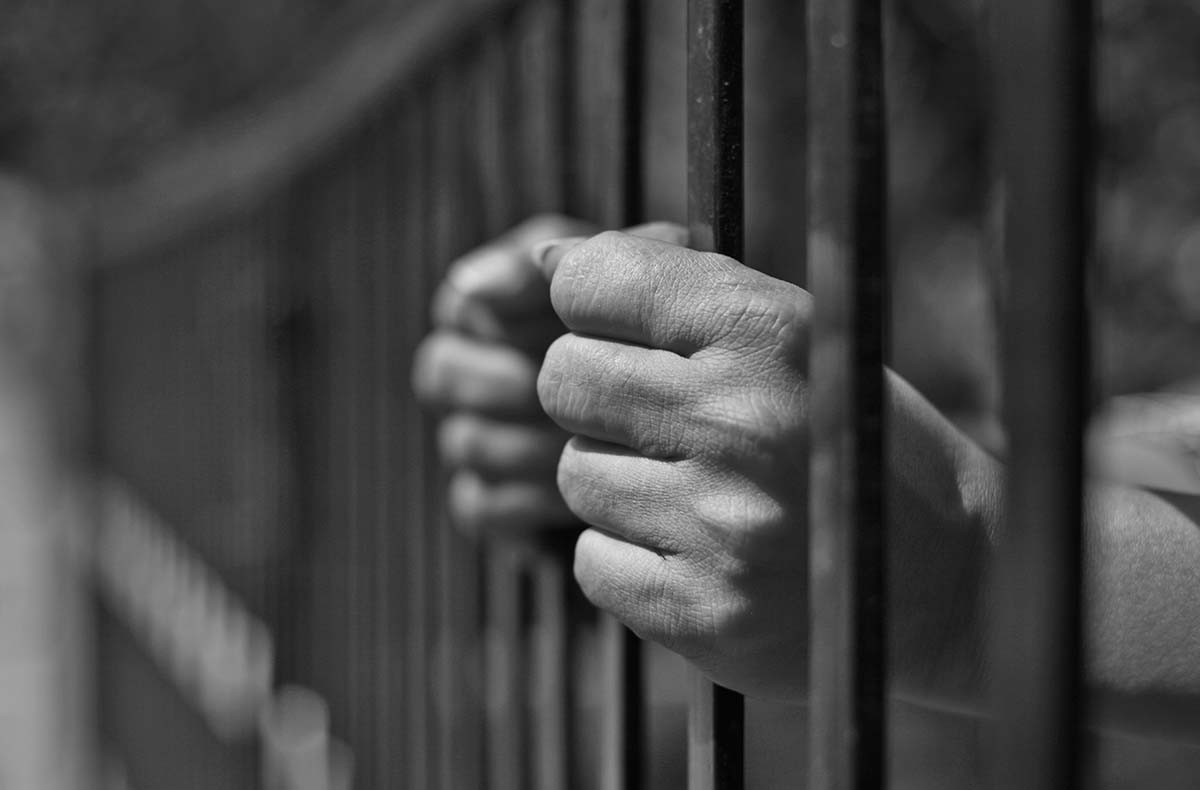
I first ate UK prison food in 2013, as a prison monitor with the Independent Monitoring Board (IMB).
The taste test
A dinner option was shaped like a pizza, with a tomato base and cheese on top. I later found out it wasn’t actually cheese, but a cheaper alternative that, once melted, oozed and left an oily residue.
Even 10 years later, I can still remember the taste and the state of my hands after holding a slice. The soup was no better—a game of “spot the vegetables”. It definitely needed seasoning, which came as postage stamp-sized salt sachets.
Meals in prison are heavy on carbs, low on taste and have questionable nutritional value. Arriving in refrigerated lorries, transferred to huge ovens or vats, rarely, if ever, grown on-site. There are those who chose a vegan menu, gaming the system as they know salad is available with a vegan option.
But what do you expect as an adult in the prison estate, when the benchmark set by the Ministry of Justice covering the cost of providing three meals a day is £2.16 (2022/23).
It is the prison governors who have the responsibility for setting the daily food allowance from their overall budget.
Breakfast packs delivered in the afternoon rarely last until morning, consisting of enough cheap cereal or porridge to feed a child, boxes of milk, tea bags and a portion of jam and margarine… if you are lucky. Many eat in their cell with little space and closer to their toilet than is deemed hygienic. Fresh fruit is always problematic, as well as bread: Both, when fermented and hidden in a sock, can produce the potent, intoxicating drink the prisoners call “hooch”.
“Do prisons use food as an instrument of control?”
“Are prisoners being filled up with carbs to pacify them?”
Inside Time, the prison newspaper, has recently started a new monthly recipe column, written by prison nutritionist Helen Sandwell, Inside & Out project lead at Food Matters, that provides ideas for creating healthy dishes.
Helen wrote: “Everyone has a view on prison food, from how it tastes to the size of the portions. Overall, people still feel that food forms part of their punishment in prison, instead of it being an element in rehabilitation.”
In society in general, food directly impacts our mental and physical health, and there is no difference in prisons. Therefore, it it is arguable that food helps in rehabilitation.
The IMB report for HMP Wayland, commented that the food portion sizes were getting smaller. To make up for this shortfall, many prisoners order extra food through the use of canteen sheets; lists of food available to buy to top up what is provided. However, for those with limited financial means, not able to get a job or education or have little or no money sent in from their families, then they are at a definite disadvantage.
The ministerial response to this IMB report stated that: “the Board (IMB) can be assured that the quality of food portions at HMP Wayland meet the recommended daily calorie intake for men.”
So that’s that as far as the minister is concerned.
The Servery
In UK prisons the servery appears to be like Mission Control. Prisoners who serve the food are the ones who control who gets what, and when. There’s no equality here. If your face fits, if you can do others a favour, then you are most likely to get the best meals. To have access to a job on the servery may be seen as favouritism and a powerful position to have.
The other side to this is that prison officers can use the jobs in the servery as a form of control too.
Does this mean that food is used as a measure of control too?
Yes, it certainly does.
Food for thought
Lack of decent quality fats and proteins, plus too many carbs can either cause prisoners to lose weight through insufficient calorie intake, or lead them to compensate by buying high calorie sweets and chocolate from the canteen sheets. Boredom makes you eat, and there is plenty of boredom in prisons. But this diet can also lead to prisoners having low energy and, therefore render them easier to control. Clearly this is a benefit to management, especially considering the shortage of officers available to work on the landings.
Is this a conscious decision?
In a national survey, the average satisfaction with prison food is a mere 35%, yet there are prisons that far exceed this. In a prisoner survey for HMP Wandsworth, 54% were satisfied. But how high is the bar?
In East Sutton Park, a women’s prison, the IMB stated: “food is consistently of a high standard in quality and quantity. Dietary requirements for health and religious needs are met.”
So, is decent food a postcode lottery?
Some good news
I spoke with Nat Middleton, Head of Food Education from Food Behind Bars, a charity which supports prisons to educate prisoners to select healthy meal options and try new dishes. An example can be found in HMP Wealston, where a new partnership has been formed. Here they have a food growing programme where prisoners can utilise the vegetables. In other prisons there are plenty of green spaces and greenhouses where vegetables can be grown but they are not used in prison kitchens. Understaffing means that there is no time to wash and prep fresh vegetables.
Food Behind Bars provide information to prisoners on wellbeing, exercise, and healthy eating. But if prisoners are locked in their cells 22 hours or more every day, there is little time for exercise and wellbeing. This makes me question why the wellbeing of so many in prison is at the bottom of the list.
I asked Nat: “In your opinion is food being used as a measure of control within prisons?”
She replied: “In some ways, I’d say definitely. A high-carb diet makes people more sleepy and less likely to act out, as they are sleeping or feeling lethargic. But on the other end of the spectrum, some prisons want to give good quality food so the men and women remain calm and don’t kick off as much, and are happier and able to do programmes and work well.”
“We would love to have a development chef in every prison in the country to work with the catering managers and kitchen teams to help make the changes,” she said.
So, can we change the lives of the most excluded in our society by changing their diet?
Remember the headlines in UK newspapers at Christmas and at other major celebrations regurgitating the same old clichés about prisons?
“Prisoners eating better than pensioners!”
It’s remarkable that there are people who still think people in prison deserve second-rate food, highlighting yet again that when it comes to prisons, the loss of liberty is not the only punishment.



